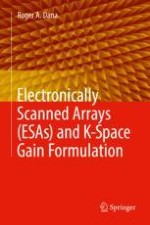2019 | OriginalPaper | Buchkapitel
4. Effect of Sky Noise on Antenna Temperature
verfasst von : Roger A. Dana
Erschienen in: Electronically Scanned Arrays (ESAs) and K-Space Gain Formulation
Aktivieren Sie unsere intelligente Suche, um passende Fachinhalte oder Patente zu finden.
Wählen Sie Textabschnitte aus um mit Künstlicher Intelligenz passenden Patente zu finden. powered by
Markieren Sie Textabschnitte, um KI-gestützt weitere passende Inhalte zu finden. powered by
